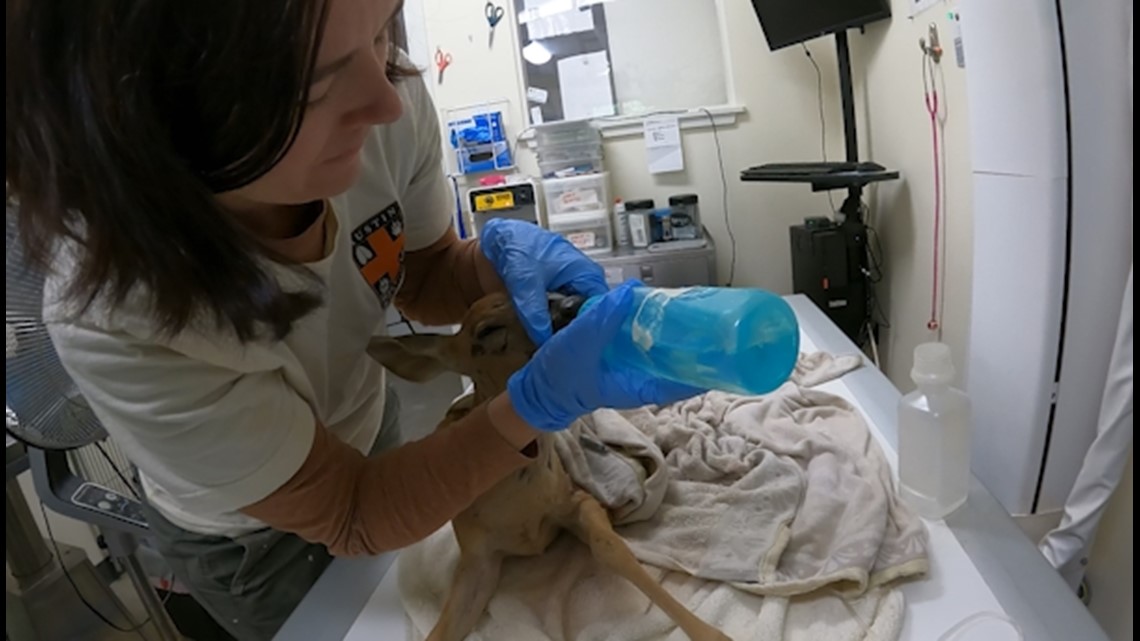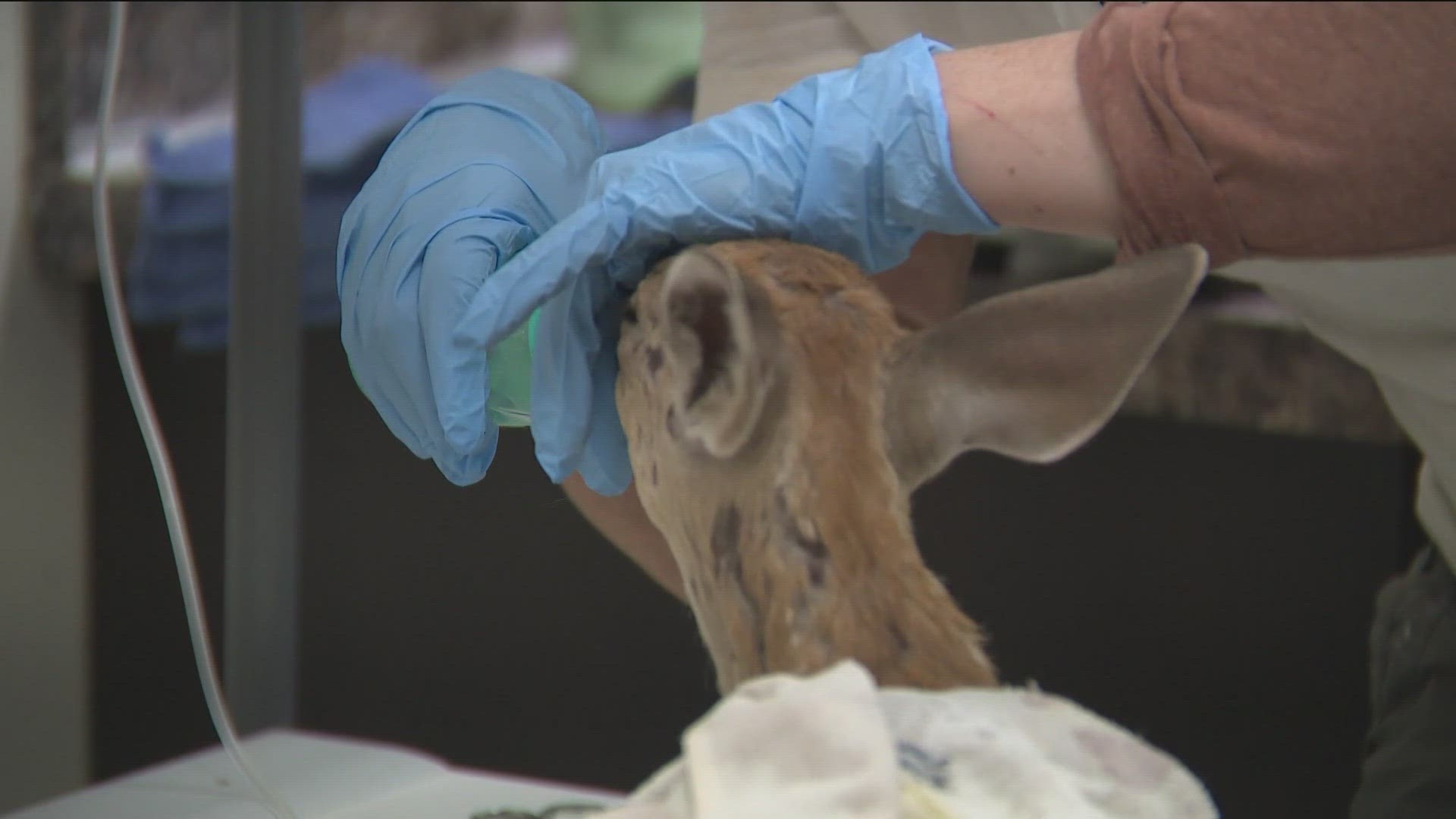ELGIN, Texas — The Central Texas heat has caused more animals to go into distress and into the care of rescue groups.
Staff at the Austin Wildlife Rescue Rehabilitation Center said although July is already a peak month for the center to take wildlife in, to date, the rescue group has seen more than 600 animals than they have in 2022.
Austin Wildlife Rescue roughly sees close to 10,000 animals per year, according to operations manager Jules Maron.
The rescue group is short-staffed and runs primarily on donations. Despite the setback, and more costs coming in due to the demand, Maron said they will not turn any animal away.
"We're going to keep taking them in and taking care of them as best we can," Maron said. "We don't get this many days over 105 degrees. So, getting the 107 and 108 [degrees], and everything that [is] going on is just so detrimental to our animals right now."
Maron explained the rescue group is tackling a range of heat-related cases. On Saturday, a fawn was brought in after it was found near the side of the road and was under extreme heat stress.
The course of action in that scenario, which Maron calls "the most severe," was to cover the fawn in a wet towel with a fan blowing over its body and give it a liquid IV.
"[The fawn] just felt extremely hot to the touch. It was open-mouth breathing, panting, heavy breathing … and so our biggest thing is to cool it down and get it comfortable," Maron said.


Fortunately, after roughly 40 minutes of treatment, the fawn was able to perk its head up and take Pedialyte from a baby bottle – a best-case scenario for an animal in such distress, according to Maron.
The fawn's case is similar to what the rescue group is seeing on an almost daily basis. The group encourages anyone who comes across an animal that appears to be struggling or in distress to call them or bring the animal in. Treatment is on a case-by-case basis.
Maron explained once these animals are cared for, the next step is to release them back into the wild. How that works is most people donate part of their land where there is natural food and water resources for the animals.
"It's not an easy thing to come by, but we are very lucky to have a good list where we're able to release the animals out in groups," Maron said.

